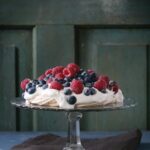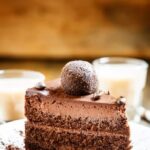Are you wondering how to decorate a whipped cream cake? Decorating a cake with whipped cream is an art that can turn any simple dessert into a stunning masterpiece. The light and airy texture of whipped cream can be molded and shaped into beautiful designs, adding elegance and flavor to any celebration. In this article, we will explore the various techniques and tips for creating a visually stunning whipped cream cake that will impress anyone who takes a bite.
When it comes to decorating a cake with whipped cream, selecting the perfect whipped cream is vital. The right type of whipped cream will hold its shape, making it easier to work with when piping decorative designs onto the cake. We will discuss how to choose the ideal whipped cream for decorating and share insights on making the whipped cream stability for long-lasting, beautiful designs.
Preparing the cake base is also an essential step in creating a picture-perfect whipped cream cake. Choosing the right type of cake that complements the lightness of the whipped cream and provides a stable foundation for decorating is crucial. We will provide tips on selecting the perfect cake base that pairs harmoniously with the whipped cream frosting.
Join us as we delve into the world of whipped cream cake decorating, exploring techniques for piping and adding decorative touches such as fresh fruit or chocolate shavings. We will also address common troubleshooting issues that may arise during the decorating process, ensuring that your final creation is nothing short of spectacular.
Selecting the Perfect Whipped Cream for Decorating
Making the right choice for whipped cream is essential when it comes to decorating a cake. There are a few different options to consider, including homemade whipped cream, store-bought whipped cream, and stabilized whipped cream. Each option has its own benefits and drawbacks, so it’s important to make the best choice for your specific needs.
Homemade Whipped Cream
Homemade whipped cream is a popular choice for those who prefer the taste of fresh cream and enjoy the process of making their own frosting. It can easily be flavored and colored to suit the theme or flavor of the cake. However, homemade whipped cream can be less stable than other options, so it’s important to use it immediately before serving.
Store-Bought Whipped Cream
Store-bought whipped cream is a convenient option that requires minimal effort. It typically has added stabilizers that help to keep its shape for longer periods, which makes it ideal for decorations that need to hold up over time. However, some people might find the flavor of store-bought whipped cream to be less desirable than homemade.
Stabilized Whipped Cream
Stabilized whipped cream offers the best of both worlds – the flavor of homemade with the stability of store-bought. This type of whipped cream is made by adding gelatin or cornstarch to help maintain its shape and texture.
Stabilized whipped cream is a fantastic option for intricate cake decorations that need to hold up well in various temperatures. Regardless of which option you choose, selecting the perfect whipped cream for decorating will set you up for success when creating a beautifully adorned cake at home.
Making the Whipped Cream Stability
Choosing the Right Whipped Cream
When it comes to decorating a cake with whipped cream, it’s important to select the right type of whipped cream. Heavy whipping cream is the best choice as it has a high fat content which allows it to hold its shape when piped onto a cake. Avoid using light or low-fat whipping creams as they may not provide the stability needed for decorating.
Chilling Your Equipment and Ingredients
Before making the whipped cream, it’s essential to chill your mixing bowl and beaters in the freezer for about 15 minutes. Additionally, ensure that the heavy whipping cream itself is well-chilled before beginning the whipping process.
Stabilizing the Whipped Cream
To ensure that the whipped cream holds its shape when decorating a cake, consider stabilizing it with gelatin or cornstarch. Adding these stabilizers will help prevent the whipped cream from deflating or weeping, especially if you plan to pipe intricate designs onto your cake. Another option is to use confectioners’ sugar which contains cornstarch and can help stabilize the whipped cream.
By following these tips and techniques for making whipped cream stability, you’ll be well on your way to creating a stunning and beautifully decorated whipped cream cake at home. With proper preparation and attention to detail, you can achieve professional-looking results that are sure to impress anyone who takes a bite.
Preparing the Cake
When it comes to decorating a whipped cream cake, it’s essential to start with the right base. The type of cake you choose can make a big difference in how well it holds up under the weight of the whipped cream and any additional decorations. Here are some tips for selecting the perfect cake base:
- Choose a sturdy cake: When decorating with whipped cream, it’s important to use a cake that can hold up well without crumbling or collapsing. A dense, moist cake such as a pound cake or sponge cake works best for this purpose.
- Consider the flavor: The flavor of the cake is also an important consideration when choosing a base for decorating. Think about how the flavor of the cake will complement the whipped cream and any additional toppings you plan to use.
- Check for firmness: Before decorating your cake, make sure that it has completely cooled and is firm to the touch. Trying to decorate a warm or soft cake can lead to a messy finished product.
By selecting the right base for your whipped cream cake, you’ll be setting yourself up for success when it comes time to add your decorative touches and create a stunning dessert that everyone will love.
Techniques for Piping Whipped Cream Onto the Cake
When it comes to decorating a whipped cream cake, the technique used for piping the whipped cream onto the cake can make all the difference. Here are some techniques to consider:
- Start with a crumb coat: Before you begin piping whipped cream onto the cake, it’s a good idea to apply a thin layer of whipped cream as a crumb coat. This will help to seal in any crumbs and create a smooth base for your decorative piping.
- Use a pastry bag and tip: For more precision and control when piping whipped cream onto the cake, use a pastry bag fitted with a decorating tip. This will allow you to create different patterns and designs, such as rosettes, swirls, or borders.
- Practice proper pressure: When piping whipped cream onto the cake, it’s important to use steady pressure on the pastry bag to achieve consistent results. Too much pressure can cause the whipped cream to squish out uncontrollably, while too little pressure can result in uneven and inconsistent piping.
- Experiment with different tips: Different decorating tips can create different effects when piping whipped cream onto the cake. Round tips are great for creating smooth lines or dots, star tips can produce rosettes or shells, and leaf tips can add subtle foliage-like accents to your cake design.
With these techniques in mind, you’ll be well on your way to creating beautifully decorated whipped cream cakes that are sure to impress at any special occasion.
Adding Decorative Touches
After successfully piping whipped cream onto the cake, it’s time to add some decorative touches to make your creation stand out. Fresh fruit is a popular choice for adding color and flavor to whipped cream cakes. Berries such as strawberries, raspberries, and blueberries are commonly used due to their vibrant colors and complementary taste with the delicate sweetness of whipped cream. Additionally, sliced kiwi, peaches, or mango can provide a tropical twist to your cake.
Another delightful addition to a whipped cream cake is chocolate shavings. Using a vegetable peeler, you can create delicate curls of chocolate from a bar of high-quality chocolate. These shavings can be sprinkled over the top of the cake for an elegant finish, or used to frame the edges for a more dramatic presentation. You can also use cocoa powder or powdered sugar for a simple yet effective dusting on top of the whipped cream.
For an extra touch of elegance, consider incorporating edible flowers into your whipped cream cake decor. Flowers like violets, pansies, and roses are not only beautiful but also safe for consumption when they are organic or specifically labeled as edible.
| Decorative Touches | Examples |
|---|---|
| Fresh Fruit | Strawberries, kiwi, peaches |
| Chocolate Shavings | Curls of high-quality chocolate |
| Edible Flowers | Violets, pansies, roses |
Troubleshooting Common Whipped Cream Decorating Issues
Decorating a cake with whipped cream can be a delight, but it also comes with its own set of challenges. One common issue that decorators often encounter is the deflation or melting of the whipped cream.
This can be caused by a variety of factors, such as warm temperatures, over-whipping the cream, or using a low-fat cream. To avoid this problem, it’s important to ensure that your kitchen and workspace are cool, and to use heavy cream with a high fat content.
Another common problem when decorating with whipped cream is achieving the right consistency for piping. If the whipped cream is too thin, it won’t hold its shape when piped onto the cake. On the other hand, if it’s over-whipped, it can become grainy and difficult to work with.
The key to avoiding these issues is to carefully monitor the whipping process and stop as soon as stiff peaks form. Additionally, adding stabilizers such as gelatin or cornstarch can help maintain the structure of the whipped cream.
Finally, creating smooth and even layers of whipped cream on a cake can be challenging for beginners. It’s important to start with a well-leveled cake base and apply a thin layer of cream before adding more for decoration. Using a turntable while piping can also help achieve an even distribution of whipped cream around the sides of the cake.
| Troubleshooting Tips | Recommendation |
|---|---|
| Preventing deflation or melting | Use heavy cream with high fat content and work in a cool environment. |
| Achieving proper piping consistency | Monitor whipping process carefully; consider using stabilizers like gelatin or cornstarch. |
| Creating smooth layers of whipped cream | Start with a leveled cake base and use a turntable for even distribution. |
Conclusion
In conclusion, decorating a whipped cream cake at home can be a fun and rewarding experience. By selecting the perfect whipped cream, stabilizing it properly, and choosing the right base for your cake, you can create a stunning dessert that will impress your friends and family. Using techniques for piping the whipped cream onto the cake and adding decorative touches such as fresh fruit or chocolate shavings can elevate the appearance of your creation.
It is important to keep in mind some troubleshooting tips to avoid common whipped cream decorating issues, such as melting or becoming too runny. By following these tips and techniques, you can ensure that your whipped cream cake looks as beautiful as it tastes.
With practice and creativity, you can become an expert at creating gorgeous whipped cream cakes at home. So next time you’re looking for a show-stopping dessert for a special occasion or simply want to indulge in something sweet, consider making a whipped cream cake with all the decorative elements that suits your taste and style.

Welcome to my blog about home and family. This blog is a place where I will share my thoughts, ideas, and experiences related to these important topics. I am a stay-at-home mom with two young children. I hope you enjoy reading it! and may find some helpful tips and ideas that will make your home and family life even better!





